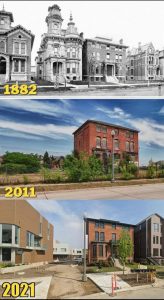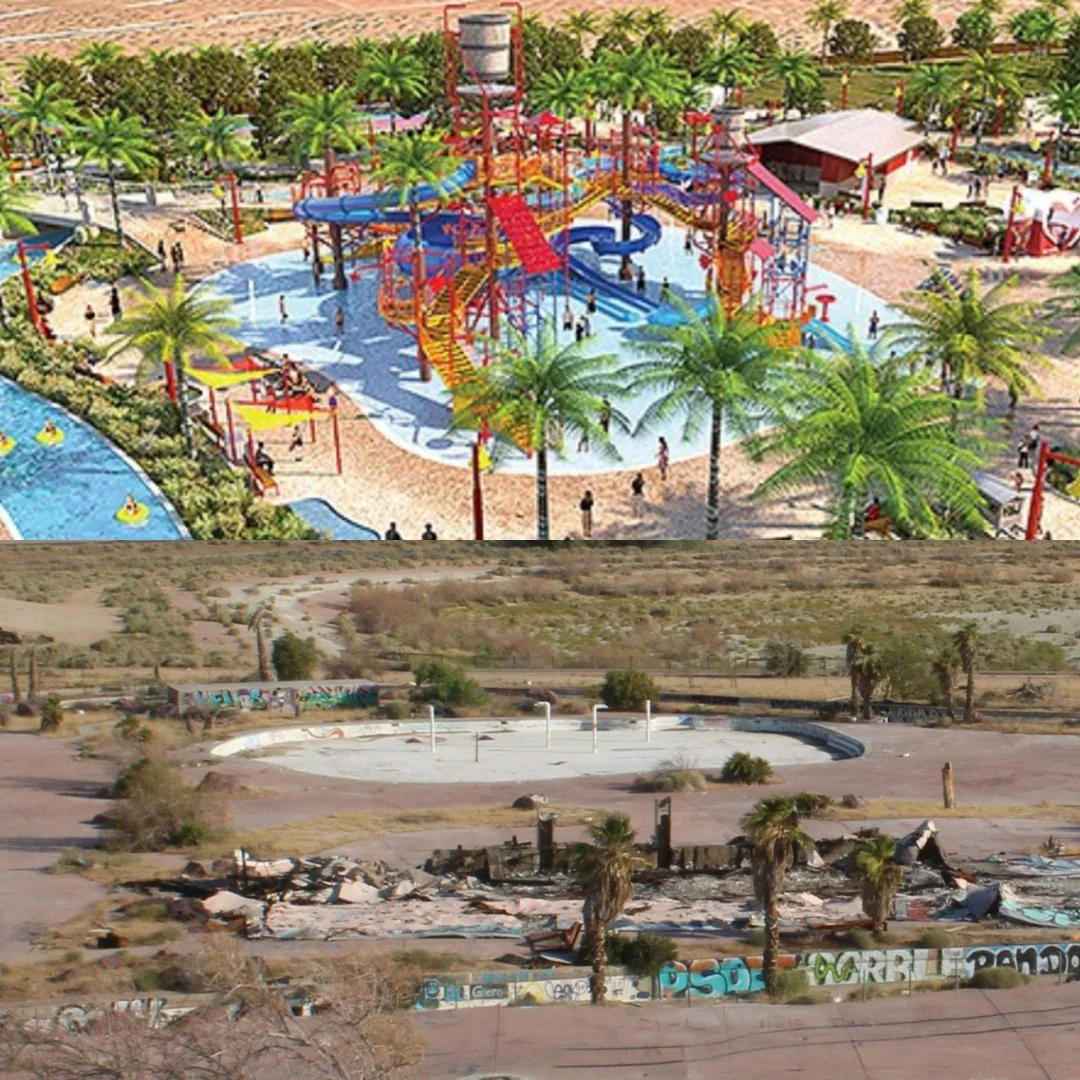Detroit, Michigan. Then vs Now
Historical Overview:
Detroit, often called the “Motor City,” has had a rich and complex history, especially in terms of its economic growth, cultural influence, and subsequent decline and revival.
Then (Early 1900s – 1960s)
Economic Boom (1910s – 1950s):
Automobile Industry Powerhouse: Detroit became the epicenter of the automotive industry in the early 20th century. Henry Ford revolutionized mass production with the assembly line at Ford Motor Company, making cars affordable for the average American. General Motors (GM), Chrysler, and Ford established Detroit as the car capital of the world.
Boomtown Vibes: The city saw rapid economic growth, attracting workers from across the U.S. and the world. Detroit’s population soared to over 1.8 million in the 1950s, making it one of the largest cities in the country.
Cultural Flourishing: Detroit was home to a vibrant music scene. The Motown sound, led by Berry Gordy’s Motown Records (founded in 1959), put Detroit at the forefront of the music industry. Artists like Stevie Wonder, Marvin Gaye, and The Supremes emerged from Detroit’s bustling music scene.
A Thriving Middle Class: The economic prosperity allowed many Detroiters to achieve the American Dream. A strong middle class emerged, with many residents able to own homes, cars, and enjoy a relatively high standard of living.
The Rise of Racial Tension (1960s):
Civil Rights Struggles: Detroit, like many U.S. cities, experienced racial segregation and inequality, despite its booming economy. Tensions between the black and white communities intensified, particularly over issues of housing, employment, and education.
1967 Detroit Riots: One of the most significant events in Detroit’s history was the 1967 Detroit Riots, which were sparked by police actions during a raid at an unlicensed bar. The violence resulted in over 40 deaths, thousands of injuries, and significant property damage, leading to a loss of confidence in the city’s government and institutions.
Decline Begins (1970s – 1980s):
Economic Decline: The 1970s and 1980s marked the beginning of Detroit’s economic decline. The U.S. automotive industry, once thriving, began to face significant challenges, including international competition and the rise of more fuel-efficient cars from Japan and Germany.
White Flight and Population Decline: As the city struggled economically, many white residents moved to the suburbs in what is now known as “white flight.” This led to a shrinking tax base and an exodus of jobs and resources from Detroit.
Decentralization: Suburban sprawl began to take hold, with the construction of large interstate highways contributing to the decentralization of Detroit. Many businesses and industries left the city, and Detroit’s downtown area began to empty out.

Now (2000s – 2020s)
Post-Industrial Challenges (2000s – 2010s):
Financial Crisis and Bankruptcy (2013): In 2013, Detroit filed for bankruptcy, becoming the largest U.S. city ever to do so. The city had amassed over $18 billion in debt, with pension obligations and inadequate city services contributing to the crisis. The bankruptcy was seen as the culmination of years of fiscal mismanagement, population loss, and industrial decline.
Population Loss: Detroit’s population had plummeted from its peak of 1.8 million in the 1950s to around 700,000 by 2020. This dramatic drop in population left behind large swaths of abandoned homes and empty lots, contributing to the city’s economic difficulties.
Deindustrialization: The decline of the auto industry (along with other manufacturing sectors) resulted in a loss of jobs and economic decline. While companies like Ford, GM, and Chrysler remained headquartered in the region, many factories closed or reduced operations, further eroding Detroit’s economic base.
Revival and Resurgence (2010s – Present):
Economic Revitalization: In recent years, Detroit has begun to show signs of recovery. A new wave of investment and development has occurred in the downtown and Midtown areas. Major corporations, including Quicken Loans (now Rocket Mortgage), have moved into the city, revitalizing neighborhoods and bringing in new jobs.
Tech and Innovation: Detroit is positioning itself as a hub for innovation, particularly in the tech sector and autonomous vehicle research. Ford, GM, and other automakers are investing heavily in electric and self-driving cars, helping Detroit reclaim its role in the global automotive industry.
Cultural Renaissance: The arts and culture scene in Detroit is thriving again. New restaurants, breweries, music venues, and art galleries are opening. Detroit is recognized for its artistic revival and as a center of creativity, with a focus on street art, music, and independent businesses.
Revitalization Projects: Several major development projects have transformed parts of Detroit. The Detroit Riverwalk has become a popular destination, and large areas of the city have seen new infrastructure investments, such as the Detroit QLine streetcar, which aims to improve transit and connectivity.
Gentrification and Displacement: However, the city’s recovery hasn’t been without its challenges. Gentrification is a growing concern as wealthier residents and new businesses move into formerly neglected areas, displacing long-time residents. Housing costs are rising, and not all Detroiters are benefiting equally from the city’s revival.
Challenges Remaining:
Economic Inequality: Despite improvements, Detroit still faces high levels of poverty, unemployment, and economic inequality. Many neighborhoods, particularly in the east and west sides of the city, remain struggling and underdeveloped.
Public Services and Infrastructure: Detroit’s infrastructure still faces challenges, including outdated public transportation, inadequate schools, and aging water and sewage systems. The city has made strides in improving services, but challenges remain.
Crime and Safety: Crime rates, while reduced from the 1990s and early 2000s, are still higher than the national average, contributing to perceptions of Detroit as a dangerous place.
Detroit Today: A Tale of Two Cities
Revitalized Downtown vs. Struggling Neighborhoods: Detroit’s resurgence is concentrated in specific areas, especially downtown, Midtown, and the riverfront. However, much of the city outside these zones still faces poverty, blight, and disinvestment.
New Energy and Identity: Detroit’s identity today is a mix of old and new. While its rich history in manufacturing and music remains a source of pride, there is also a growing sense of innovation, particularly in the areas of technology, urban agriculture, and sustainable living.
The Power of Community: Detroit’s revitalization is being driven in part by grassroots efforts. Local entrepreneurs, community activists, and organizations have been working to rebuild neighborhoods from the ground up, emphasizing self-sufficiency and local ownership.
Conclusion:
Detroit’s journey from an industrial powerhouse to a city in crisis and then to a symbol of resilience and rebirth is a story of profound transformation. While it still faces significant challenges, the “Motor City” is slowly but steadily finding its footing once again, with a new wave of energy, investment, and cultural renewal that promises to shape the city’s future.
